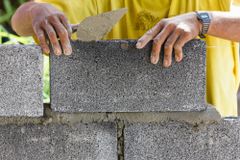
Concrete in all its forms uses aggregates like gravel to achieve optimal consistency for its purpose. Balancing the ingredients requires an understanding of how they interact with each other. Before mixing your own concrete, learn more about the role of aggregates in its composition.
What Kinds of Aggregates Are Used in Concrete?
 Concrete comprises up to 75% aggregate. Aggregates come in two types: fine and coarse, separated by their sizes. Sand is fine while gravel is coarse, and both define concrete. Without them, the mix is either mortar or cement. Cement is made of water, limestone, sand, shale, and clay. Add more water and sand, and cement becomes mortar. The final ingredient is gravel to make concrete.
Concrete comprises up to 75% aggregate. Aggregates come in two types: fine and coarse, separated by their sizes. Sand is fine while gravel is coarse, and both define concrete. Without them, the mix is either mortar or cement. Cement is made of water, limestone, sand, shale, and clay. Add more water and sand, and cement becomes mortar. The final ingredient is gravel to make concrete.
Why Are They Used?
Both sand and gravel create the necessary friction and volume that results in durable concrete. Fine aggregate is easier to mix with water, while coarse produces a solid concrete. Large gravel pieces also contribute to the concrete’s strength.
The amount of water added is what determines concrete’s consistency and the required aggregate amount. More aggregate and less water make the mix stronger and less likely to crack. When the mixture is watered down, it’s too weak to withstand pressure. However, too much fine aggregate and water can also make concrete too rigid. That’s why you need to find the balance between fine and coarse aggregate in combination with water.
If you’re looking for materials to use in concrete, turn to Edwin De Luz Trucking & Gravel in Kamuela, HI, the Big Island’s leading aggregate supplier. Founded in 1986, they offer everything from concrete sand and gravel to black motor sand and cinder soil. For details on their products and services, visit the website, or call them at (808) 885-9346 to place an order today. You can also check out photos of their work on Facebook.
About the Business
Have a question? Ask the experts!
Send your question

